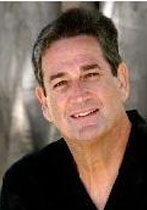
SAN DIEGO — He is understandably remembered and cherished as the iconic civil rights leader, “the drum major for justice,” and for his brilliant oratorical skills. Some also recall his provocative, brave cri de coeur as the vanguard protestor against the Vietnam War—which did not line up in his “moral field of vision.”
But truthfully, ultimately Dr. King lived and died as a disciple of labor and the closing segment of his brief but unforgettable ministry was focused on the rights and dignity of working men and women. It behooves us on this Labor Day, a holiday so poignant and bittersweet this year, to remember what Martin Luther King,, Jr. was doing when he was assassinated in Memphis on April 4, 1968: he was trying to help some sanitation workers gain both union recognition and a modest pay raise.
Responding to a call from Rev. James Lawson, one of the most unheralded and physically valiant of the civil rights leaders, King decided to join in the efforts of 1100 wildcat, overwhelmingly African American garbage workers that fateful spring. These men, completely fed-up with wages so meager that many of them also qualified for welfare benefits and/or carried second jobs, denied any benefits whatsoever (unlike their white counterparts or supervisors), were also barred from creating a union.
King, who was sadly plummeting in the eyes of many due to a perceived lack of continued relevance, saw the Memphis strike as a unique opportunity to join the freedom struggle to the core values of the labor movement. He genuinely construed that the Memphis crisis was a paradigm for his fledgling Poor People’s Campaign—which would bring thousands of workers of every color and creed to Washington, DC that summer. The almond-eyed preacher had moved beyond racial struggles to a campaign for economic justice.
King visited Memphis three times—against the strong protests of his closest advisers. They worried about losing the emphasis on the overall Poor People’s Campaign, about the fund-raising efforts that were encumbered by MLK’s Vietnam position, about the man’s personal safety. A downtown march on March 28 turned violent (the first and only protest King failed to control) and he had to quit the event for his own security. He fell into one of his characteristic melancholies but still returned on April 3—the night of his hauntingly prophetic “Mountaintop” preachment.
Martin Luther King, Jr. was assassinated on the balcony of the Lorraine Motel at 6:01 PM on Thursday, April 4, 1968. To paraphrase his good friend, Rev. Samuel “Billy” Kyles, who witnessed the shooting from just a few feet away on the balcony, King did not die leaving the scene of a crime. He did not die from a drug overdose. He did not die in the arms of a lover. He died trying to help some garbage workers.
The labor dispute that spawned the immortal “I AM A MAN!” placards, carried in grizzled dignity by poor black men who normally hauled stench-filled buckets and cans of garbage, was settled a few days later. Their union was recognized and they got a meager raise.
As James Taylor has chanted, “Oh let us turn our thoughts today to Martin Luther King.”
*
Rabbi Kamin is a freelance writer based in San Diego. He may be contacted at ben.kamin@sdjewishworld.com